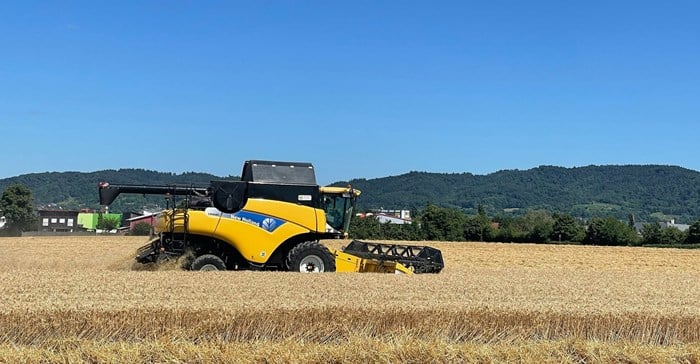Johannesburg: As the global population hurtles towards a staggering 10 billion by 2050, the pressure on our already strained food systems is reaching critical levels. Experts predict a necessary 60% surge in food production within the next few decades, a monumental challenge for a world where smallholder farmers, the backbone of food production, often struggle with outdated techniques and meagre yields.
Mechanisation has long been touted as the magic bullet to unlock agricultural productivity. Yet, for the vast majority of smallholder farmers across the globe, the cost of modern farming equipment remains an insurmountable barrier. A single tractor, for instance, can set a farmer back an average of US$30,000 – a fortune for those living on the margins.
Nowhere is this mechanisation gap more acutely felt than in Sub-Saharan Africa, which limps along with a mere 13 tractors per hectare of arable land, a stark contrast to the global average of 200. Financiers, often viewing agriculture as a perilous gamble, are hesitant to extend credit to these small-scale producers, further compounding the problem.
“Manufacturers of farm and processing equipment to a large extent do not design this machinery while factoring in smallholder farmers,” Simon Andys, CEO of Kenyan agricultural company Premier Seed, told FairPlanet. “In the end, equipment that is meant for big agriculture enterprises does not work for small-scale producers, which ends up locking this crucial group. In essence, these manufacturers should have small-scale producers and the environment in mind. This will also be key in making farming sustainable and winning more youth into farming.”
However, amidst this landscape of challenges, a new wave of innovation is taking root. Leveraging Africa’s burgeoning digital revolution, a generation of forward-thinking entrepreneurs is pioneering shared economy models to democratise access to essential farm equipment.
Tapping into the Ag-Tech Revolution
The concept is simple yet potentially transformative: connecting farmers with tractor owners who are willing to rent out their machinery on an as-needed basis. Dubbed “Uber for the Farm,” these initiatives, springing up from Nigeria to Kenya and Ghana, are hailed as a crucial first step in tackling the continent’s agricultural productivity and farmers’ income woes.
“As digital platforms for agriculture and other agritech solutions continue to evolve, the experiences of these digitally enabled mechanization service pioneers can help advance innovation, practice and scalability to make farm mechanisation rental a viable proposition for all stakeholders,” notes a report by the Alliance for a Green Revolution in Africa (AGRA) and the Mastercard Foundation.
One of the early pioneers in this space is Hello Tractor. Launched in Nigeria in 2014, the startup has rapidly expanded its reach across 13 African nations and three in Asia. To date, it has partnered with over 3,000 tractor owners and connected them with more than half a million farmers.
Hello Tractor’s platform operates via a user-friendly digital app, linking tractor owners with farmers. Community-based agents are recruited to onboard farmers and provide crucial on-the-ground support. Tractor owners, in turn, install Hello Tractor’s GPS device on their machinery, enabling them to receive booking requests and monitor their equipment’s activity.
When a farmer makes a booking, they are automatically connected to the nearest available tractor, a system that reportedly allows them to plant a staggering 40 times faster at just one-third of the traditional cost.
The platform fosters transparency on both sides. Tractor owners can track the location of their machinery, the tasks performed, fuel consumption, and any necessary maintenance. Farmers, mirroring the rating systems of ride-hailing apps, can rate tractor operators, providing valuable feedback for other users.
Augustine Mwongela, a smallholder farmer in Kenya, has experienced the transformative power of Hello Tractor firsthand. For the past two years, he has used the platform to cultivate his half-hectare plot. Previously reliant on arduous manual labour from casual workers and his family, he now lauds the speed and efficiency of the leased tractor.
“The tractor leasing model has allowed me to speed up tilling and planting, cutting cost and also expanding my area under cultivation from 0.1 hectares to 0.5 hectares,” Mwongela told FairPlanet. “With that expansion I have increased the variety of crops I grow, from maize and beans to an array of horticultural ones, such as kale, onions, tomatoes and capsicum, [which] I sell in local markets.”
TROTRO Tractor Limited, another key player in the tractor leasing market, commenced operations in Ghana in 2016. Their approach differs slightly, connecting farmers and tractor owners through text messaging and dial-up systems. Unlike Hello Tractor’s agent-based model, TROTRO interacts directly with farmers. The company has also forged partnerships with farm equipment sellers to broaden its machinery offerings and collaborated with financial institutions to assist farmers in purchasing their own tractors.
Hello Tractor has continued its expansion, establishing a presence in Zimbabwe, Nigeria, and Togo, and registering over 27,000 farmers on its service to date.
Navigating the Bumps in the Road
Despite the undeniable potential of these “Uber for the Farm” initiatives to unlock vast tracts of arable land for a growing number of farmers, the concept is not without its inherent challenges.
In some instances, tractor dispatch is contingent on sufficient demand, meaning individual smallholder farmers seeking to lease a tractor may face uncertainty regarding availability. While refunds are typically issued for pre-paid services when tractors are unavailable, the crucial window for tilling often passes by.
Furthermore, the success of these digitally-driven solutions is intrinsically linked to network coverage and digital literacy rates, both of which remain significant hurdles in many rural African communities. The reliance on smartphones and consistent internet connectivity inevitably excludes a significant portion of the target demographic.
The AGRA report highlights the critical need for harmonising the connection between tractor owners and farmers, noting that “pooling resources to share equipment is not a simple fix, either, because successful mechanization requires a well-functioning ecosystem of equipment dealers, asset and input financing, maintenance, spare parts, training and market access – such as off-takers ready to buy the farmers’ produce on time at a fair price.”
“In the absence of such ecosystem coordination, there are few available, good quality, affordable mechanization options.”
Andys of Premier Seed underscores the importance of a collaborative approach, bringing together government, private sector stakeholders, and development partners to strengthen partnerships around mechanisation and formulate policies that accelerate the adoption of modern farming techniques.
“With a burgeoning population, changes in weather and dwindling soil fertility, mechanisation is the way to go if we are to boost food and nutrition security, create jobs, introduce more young people into farming and increase our national earnings,” Andys concludes. “The matter should be given the priority it deserves.”
The “Uber for the Farm” revolution, while facing teething problems, offers a compelling glimpse into a future where technology bridges the mechanisation gap, empowering smallholder farmers and bolstering food security across the African continent. The journey may be complex, but the potential rewards for a hungry world are immense.




